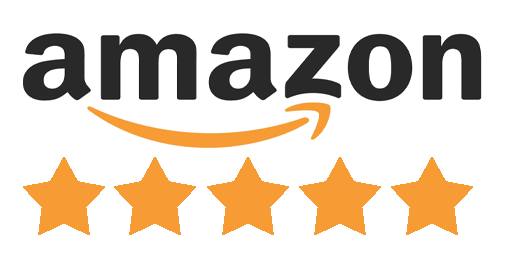Amazon SEO guide – How to rank your product listings organically

Amazon SEO guide - to rank your product listings organically
One of the greatest advantages of selling on Amazon is that it has millions of buyers searching for different products every day. Most of these buyers make a purchase from the first page of search results and don't even look at the second page. Therefore we are giving you a brief Amazon SEO guide. It will help you to increase your chances to appear on higher rankings.
Of course, you can run ads and appear on the first page under specific keywords. But being able to rank organically can create a stable sales flow without needing to spend on advertising.
In this Amazon SEO guide, we explain the key aspects of search engine optimisation and how the A9 algorithm works. Also providing you with the knowledge and tools to help you rank better and make your products more visible.
How A9 algorithm affects Amazon SEO?
A9 is an Amazon search algorithm and it decides which product to show under specific keywords. Using data from hundreds of thousands of queries that people have already made. The A9 algorithm can interpret and recommend products which are more likely to convert. A9.com is a subsidiary of Amazon that develops search engine and search advertising technology.
Understanding how Amazon SEO works means you can rank highly on Amazon search pages.
The Amazon A9 algorithm begins by crawling your product page and understanding what you sell. Therefore, to build an optimised listing which ranks well, you need to be aware of the following criteria:
-
Place your product in the right category
First things first, before creating a product listing you must choose the right category. For example, when you search for ''notebook'', Amazon A9 will show you products which are placed in the ''Stationery & Office Supplies'', knowing that this particular keyword relates to this specific category.
Some sellers make the error of placing a product in the wrong category. Therefore lose out when it comes to product visibility. To avoid this, look at the categories your competitors place their products in. You can always find this information at the bottom of the product listing:

-
Keywords for Amazon SEO
Keywords are vital for enabling Amazon to determine relevance to search queries and to set rankings on its result pages.
Practically speaking, you should add keywords in the backend of the product listings. You’re allowed a maximum of 250 characters, which is approximately 30–50 keywords. Based on our experience, 3–10 keywords generate 90% of sales.
To get started with Amazon keyword research, we recommend you get additional suggestions by going to Amazon.com (be sure to log out of your account first and clear your cache to avoid any suggestions based on your previous search history).
Suggestions for long-term keywords usually have a high search volume too. So, choose ones which are relevant to you and implement these in your listings.
-
Use tools for keyword research
For more advanced research, we’d recommend using tools to find out search volumes and potential keywords. S.O.N.A.R. is one of them, which is a free tool but limited in its offering.
Use more advanced tools like keywordtool.io or Helium. Which will give you an idea of the approximate number of monthly searches and potential long-term keywords.
To implement your keywords into the backend of product listings, simply copy the keywords with the highest volume and relevance. Then delete any duplicated words, and paste them as one sentence in the backend field.
It is important to note that these tools are not 100% accurate on search volumes. Therefore we suggest using a range of tools to get an overview from different software perspectives.
Using Google to find keywords for Amazon
Another tip is using Google Keyword Planner if you have a Google Ads account, and search for the keywords there. Amazon has a really strong presence on Google search pages. So sellers can increase their product rankings by optimising them for both Amazon A9 and Google search engines.
One more thing about backend keywords, is that once you change them, you might lose your current ranking. This is because Amazon is giving you a fresh chance to prove you can sell under these specific keywords and that they are relevant to your product.
Based on the keywords, you should then build the Title, Bullet Points and Description.
-
Title
The title is one of the strongest factors when it comes to on-page content relevance. Not only that, but the title is also one of the factors which generates click-through rates (CTR) and should therefore be attractive, informative and include keywords.
Some sellers stuff their keywords into the title which makes the listing look unprofessional.
The best practice is to use the same order of the keywords in the backend as in the title, and at the same to make it sound natural, which can sometimes be pretty hard to implement.
Here is a tip for what the perfect title should include:
- Brand
- Product line
- Material or key feature
- Product type
- Colour
- Size
- Packaging/Quantity
For organic results, titles should typically be 115–144 characters, depending on the product/category.
Titles in right rail ads show around 30–33 characters, and mobile titles have 55–63 characters.
-
Bullet points
Any further relevant keywords that didn’t fit into the title can be placed in the bullet points and description. However, make sure they don’t interfere with your content and conversion rate.
Bullet points don't directly impact your rank, but they give you the opportunity to influence factors such as conversion rate and product relevance.
So why do we mention bullet points in this article if they don’t affect ranking directly? Because one of the most important factors for Amazon SEO is conversion rate. If you have lots of CTRs in your listings but no conversions, Amazon will identify that product as having low relevance to the specific keywords and will bring the listing down in the search pages.
And when it comes to relevance, Amazon A9 will still index words from the bullet points and description to see if they are relevant to the backend keywords and title.
Having bullet points within your listing is an opportunity to present the features and benefits of your product to your market – and should address how these products can solve your customers’ problems.
You can only have 5 bullet points, each with a maximum of 500 characters.
-
Description
Description and the bullet points go hand in hand, so it is best to place any remaining keywords in these sections.
For the description, focus on making the copy readable, natural and convincing from a pure sales standpoint.
If you’re registered for Amazon’s Brand Registry, you will have the option of creating Enhanced Brand Content (EBC), which usually generates higher conversions.
-
Customer Reviews
Amazon focuses on providing the best customer experience for buyers. Therefore product reviews are a critical part of Amazon SEO and conversion rate.
One negative review can make your listing drop down the search pages, just as positive reviews can boost it up.
Amazon scans reviews for keywords, which means that the reviews themselves play into the overall SEO product ranking in Amazon’s algorithm.
When launching a product, review strategy is an integral part of each and every successful Amazon seller.
The more reviews you have, the more likely it is that you’ll show up in Amazon’s search engine. Not only that, but people can search by review rating. Amazon allows customers to search for items by Average Customer Review and this is one of the most prominent and commonly used filters on the site.
Another aspect where reviews really make an impact, is by influencing customer purchase behaviour.

-
Conversions and Amazon SEO
As was mentioned before, if you have too many CTRs with no conversions, you might lose ranking. So no matter how good your keywords, title, and reviews are. If the customers don’t buy your products, or perhaps if you’re ranking for the wrong or irrelevant keywords, you might lose your ranking over time.
Under Reports -> Business Reports, in Seller Central, you can track conversion rates for each product.
A/B testings are one of the ways you can understand what converts better for your product. Splitly is a great tool which allows you to track the results.
Besides everything mentioned above, images have a huge impact on conversions.
High quality images
One of the key components of your Amazon listing is the imagery. And when it comes to optimising your product photos, you’ll need to think about the context in which they’re viewed.
First, follow the Amazon technical images requirements: images should be at least 1000 pixels in either width or height, the product should fill 85% of the frame, etc.
The main image is the one that generates CTRs as it’s seen in the search pages. It should not have any distracting elements and should represent the product clearly.
But when it comes to pictures within the product listing itself, text or information in the photos might generate higher sales. You can see an example here:
It’s advisable to engage a professional photographer when it comes to getting the best images for your product.
How to track your organic ranking
You can track the ranking position of your product in the category. To do this, download the Helium extension, which is free.
When you visit each of the products in turn, you will see a chart underneath which shows the ranking in your category.
If you would like to track your ranking according to specific keywords, the Sellics tool has this feature.
Conclusion
In summary, to build optimised listings, you should work on finding the most relevant keywords with the highest volume, and build listings based on these. Be creative and informative in describing your product’s benefits and how it can solve a customer’s problem. Make sure you have outstanding images and that you get positive reviews. Go through your listings based on this Amazon SEO guide and see if your ranking is increasing.
Success requires a lot of work and deep research. If you experience low conversion rates, try to work things differently and get a better understanding of your potential customers.
Just because you’ve optimised your listings once doesn’t mean the work is over. Optimisation is an ongoing process and will require going through a cycle of optimising, analysing and repeating.
At INNELS, we help companies to create a successful SEO strategy, implementing it in such a way that it beats the competition. With experience in using a variety of tools, implementation of our SEO strategies can create a stable sales flow for your products.
Reach us and let us know what you think about the Amazon SEO guide and what your experiences have been so far.